Anglers Booking Team
The expert copywriters at Anglers Booking have meticulously crafted this article. Our dedicated team of writers provides valuable insights and information to enhance your angling experience.
 10 minutes read
10 minutes readSwordfish are known for their power and speed, but their most distinctive characteristic is a sword-like bill. They are among the most prized game fish in the ocean, revered for the challenge of reeling them in. These elusive predators roam the deep waters of the Atlantic, Pacific, and Indian Oceans.
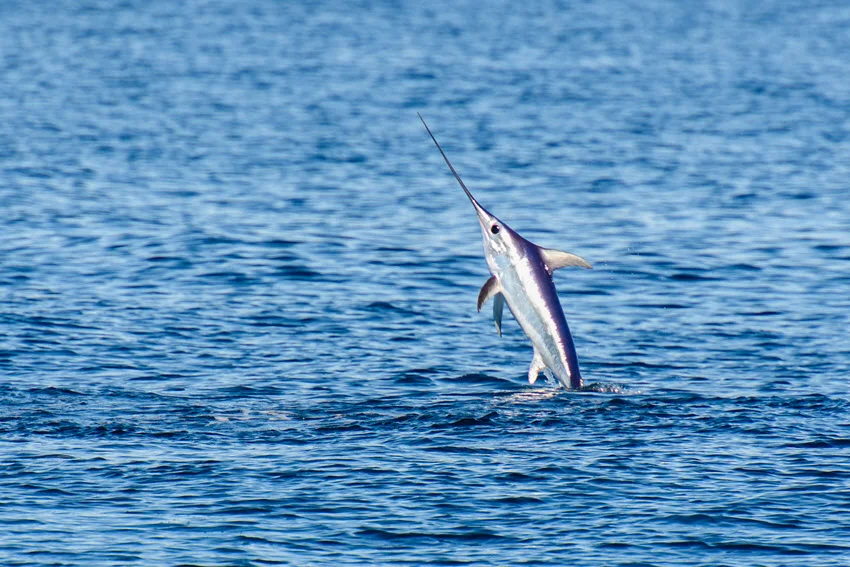
Whether you're a seasoned offshore angler or a beginner, this guide will give you all the essential facts about fishing for Swordfish. The behavior of this giant fish, including the best times to fish, gear, techniques, and regulations, is among the information you will receive.
The Swordfish is a well-known predator in the ocean. However, several other fish closely resemble it. The Swordfish is recognizable by its long, pointed bill and robust build. Two other well-known species share similar characteristics: the Marlin and the Sailfish. These three are often grouped under the term Billfish, reflecting their distinctive spear-like snouts.
Despite their visual similarities, each species has its distinct features and behavior. Understanding the differences between these game fish is essential for any serious angler. Let's take a closer look at what makes each of them special.
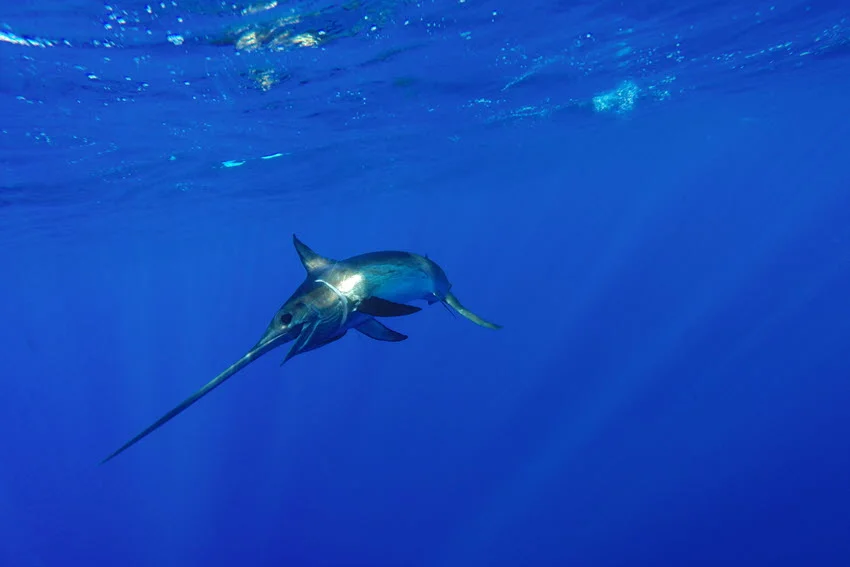
Swordfish are some of the largest predatory fish in the ocean. They can reach lengths of up to 176 inches. In some situations and conditions, their weight can go up to 1,433 pounds. Most recreational catches range from 72 to 108 inches in length. The average weight of this fish is 200 to 500 pounds. Swordfish can live up to 15 years. Females typically outlive males.
They are highly migratory and found in both temperate and tropical waters. In the Gulf of Mexico, the best time for Swordfishing is from May to September. In Florida, excellent catches are also reported during daytime deep-drop fishing in January. Swordfish usually reside at depths between 1,000 and 1,800 feet.
Swordfish are voracious predators. Their diet includes squid, mackerel, herring, bluefish, and crustaceans. They use their long, flat bills to slash at schools of fish, stunning or killing prey before consuming it. Their large eyes provide them with exceptional vision in the dark, enabling them to hunt effectively at extreme depths.
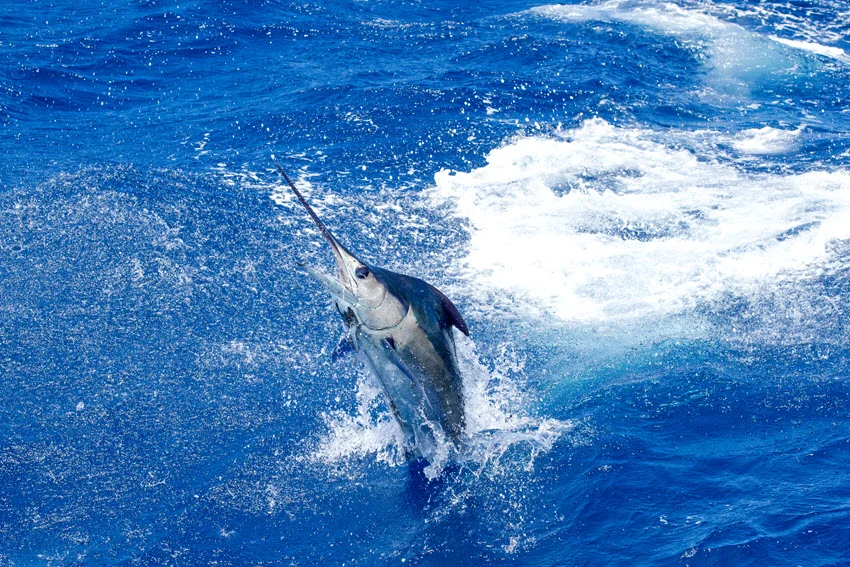
Marlin species vary, and the Blue Marlin is one of the largest, reaching lengths of 192 inches and weights of up to 1,800 pounds. Males are usually smaller, but females dominate the size records. Most marlins live around 10 to 15 years in the wild.
They are found near the surface of deep offshore waters and usually prefer warmer temperatures. In the Atlantic, the summer months, from June to September, are the prime time. They are generally found at depths of 300 to 600 feet. In comparison with Swordfish, they are often closer to the surface.
Marlin feed on a mix of Tuna, squid, and cephalopods. They rely on speed and agility to chase down prey. They are using their bills more for injuring rather than spearing.
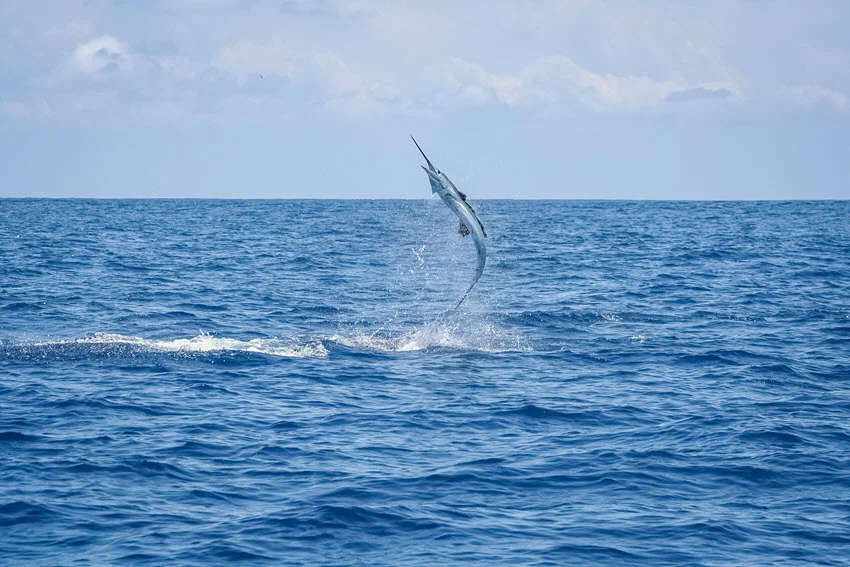
Sailfish are generally smaller than Swordfish and Marlin. They grow up to 132 inches. They weigh up to 200 pounds. Still, the most caught specimens are between 40 and 100 pounds. Their lifespan ranges between 4 and 10 years, depending on the species (Atlantic or Indo-Pacific).
They thrive in warm, shallow offshore waters and are usually caught at 100 to 300 feet. During their migration period, between November and April, the best time to catch Sailfish in places like Florida or the Caribbean is.
Sailfish feed on small pelagic fish like sardines, anchovies, needlefish, and squid. They use their distinctive sail-like dorsal fin and speed (up to 68 mph) to herd and trap prey. Like Swordfish, they also use their bills to stun fish before eating.

Timing can be a game-changer in a successful Swordfish trip. They may be present year-round in some areas, but knowing exactly when to target them can significantly improve your chances. Seasonal migrations, feeding behavior, and water conditions all play a role in the activity of swordfish.
Swordfish are found in numerous locations worldwide. Each area has its own optimal time for fishing this species. For example, in Florida, summer and fall are the best times of year for fishing for Swordfish. Specifically, June and October are the best months here. It is similar in the Gulf of Mexico.
As the year progresses, the season shifts westward. In Southern California, Swordfish become more active starting around September. Opportunities continue into the early months of the new year. In Hawaii, peak Swordfish fishing is from January to May.
These seasonal windows aren't just about water temperature. They also reflect changes in bait availability, moon phases, and current patterns. All these influences on where Swordfish will be and how likely they are to bite.
Nighttime fishing is traditionally the most productive period for catching Swordfish. In this period, they rise closer to the surface to feed under the cover of darkness, making deep-dropping at night a proven strategy for decades.
However, day fishing for Swordfish has also become popular. This is mainly due to advances in equipment and techniques. Anglers using electric reels or hand rigs with heavy pencils can reach Swordfish even when they stay in deep zones. This is often between 1,200 and 1,800 feet below the surface.
However, targeting them around dawn or dusk can increase your chances of success. The best chances for a successful catch are especially when the water temperature changes or the baitfish are more active.
When changes in the water caused by currents or tides occur, it triggers a reaction among predators.
Moderate tidal movements often stimulate the feeding of Swordfish. This is pronounced when they coincide with a waxing moon or a strong thermocline. Low-tide periods are when the water is too calm, and the fishing period is not ideal. These windows usually result in less bait activity and fewer strikes.
Pay attention to upwelling, downwelling, and underwater canyons, especially when they occur in conjunction with moving water. These areas concentrate nutrients, which makes them ideal ambush spots for Swordfish.
Swordfish inhabit deep offshore waters around the globe. However, certain regions stand out for their advantages. Knowing where to go can make all the difference. Below, we explore some of the best locations for Swordfish fishing. Don't miss it!
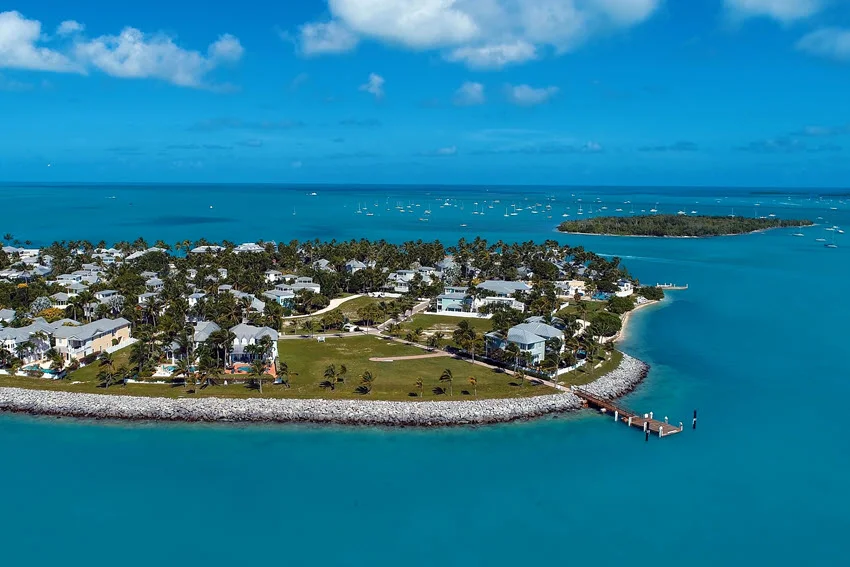
The Florida Keys offer great opportunities for fishing for Swordfish. Anglers can target these fish year-round. Peak season is from May through November. The deep waters off the Keys range from 1,500 to 2,000 feet. Places like this provide an ideal habitat for Swordfish. Islamorada and Key West are particularly popular departure points. It offers easy access to productive fishing grounds. Also, they are just 25 to 45 miles offshore.

Nova Scotia's offshore waters are a popular place for fishing for this predator in Canada. The region features deep canyons, providing an ideal habitat for these predators. Nutrient-rich currents also create an ideal place for Swordfish. Anglers often venture out during the summer months. July to September is a prime period. The traditional harpoon fishery, a sustainable and historic method, is still practiced here.
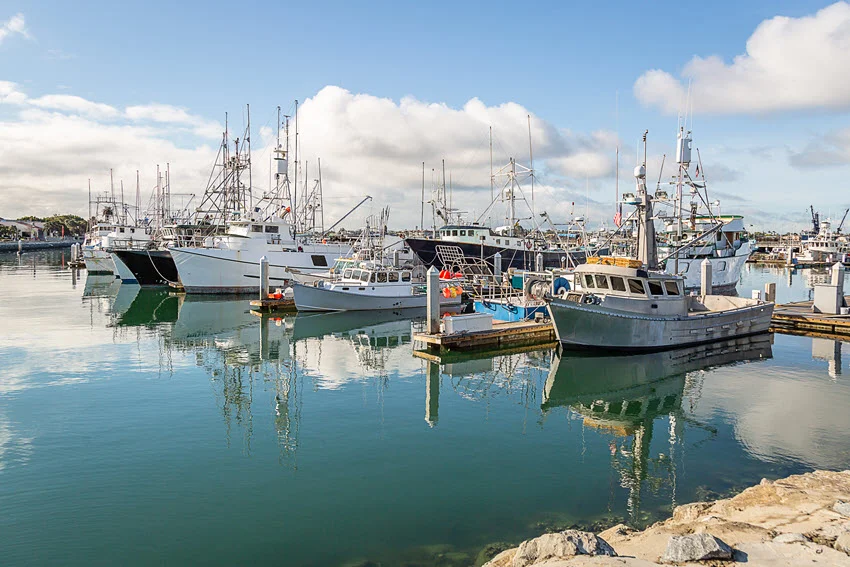
Southern California has emerged as a notable destination for daytime Swordfish fishing. The region's unique underwater topography, including canyons such as Newport, La Jolla, and Redondo, allows anglers to access deep waters near the shore. This proximity enables even smaller vessels to participate in Swordfishing adventures – the season peaks from September through early January.

Hawaii offers some of the most consistent Swordfish fishing in the Pacific. The waters around Kailua-Kona on the Big Island are particularly productive. Swordfish are commonly caught between January and May. The combination of deep offshore waters and experienced local charters makes Hawaii a prime location for targeting these prized fish.

The Canary Islands are situated off the northwest coast of Africa. They are a hotspot for big-game fishing. Of course, that includes Swordfish. The deep Atlantic waters surrounding islands like Gran Canaria and Tenerife provide excellent conditions for targeting Swordfish. The peak is during the warmer months, from May to October. Anglers can expect exciting battles with these powerful fish. They often employ deep-drop techniques to reach them at depths ranging from 1,500 to 2,000 feet.

Tasmania is renowned worldwide for its robust swordfish fishery. Fishing for this fish is particularly popular in the Bass Canyon region. This underwater canyon, one of the largest in the world, provides a rich habitat for Swordfish. Anglers typically target these fish from April through June, with specimens averaging 250 to 300 pounds and some exceeding 700 pounds. The excellent conditions and potential for trophy-sized catches make Tasmania a sought-after destination for dedicated Swordfish anglers.

The Mediterranean Sea, especially around the Balearic Islands such as Mallorca, is a historic hotspot for Swordfish fishing. Anglers can expect peak activity from May through November. The region offers diverse fishing techniques, including trolling, drifting, and fly fishing for Swordfish.
Swordfish demand specialized tactics that match their feeding habits and habitat preferences. Below, we discuss the best techniques for fishing for this giant fish.

Swordfish follow their prey into the ocean's Deep Scattering Layer (DSL), a band of water where squid, plankton, and baitfish gather in significant numbers. By positioning your bait within this layer, you put your offering exactly where Swordfish are most likely to strike. The DSL can sit anywhere from 1,000 to 1,500 feet during daylight hours. It often rises within 200 to 500 feet of the surface at night. Aligning your gear to these depths is the first step in any effective Swordfishing plan.
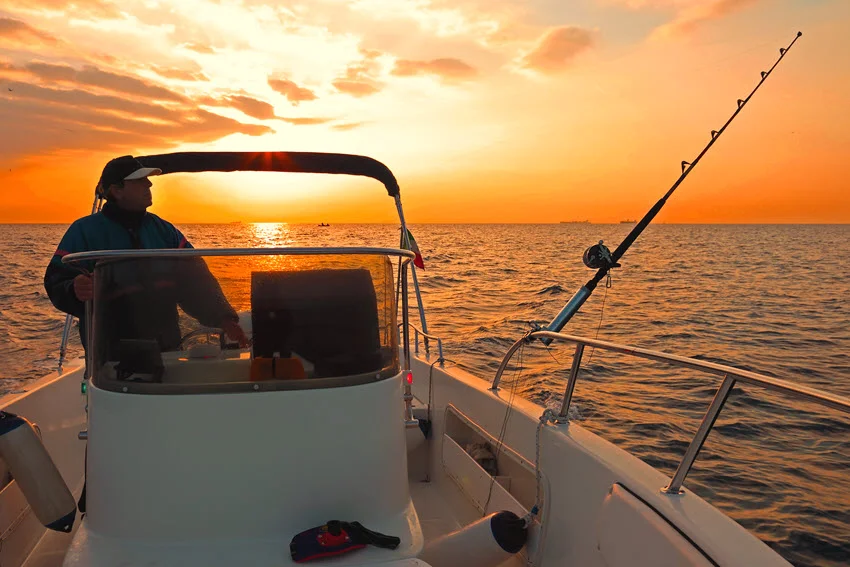
Drift fishing after dark has long been a cornerstone of Swordfish angling. As the DSL ascends, your squid or fish bait, suspended 100 to 800 feet below the boat with a gentle drift, becomes irresistible to feeding Swordfish. A small underwater light can help attract and hold baitfish near your rig. It will create a target zone for hungry Swords. This hands‑off method allows you to use multiple lines and cover more area with minimal anchor work.
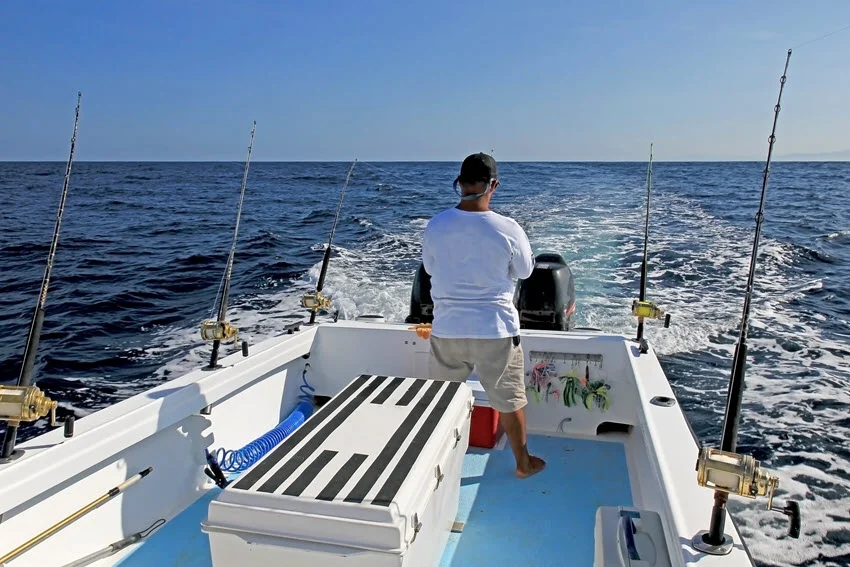
Advances in tackle have opened the door to daytime swordfishing through deep dropping. Using electric or high-capacity manual reels, anglers lower heavy jigs, live baits, or artificial lures to depths between 1,000 and 5,000 feet. Because Swordfish remain near the bottom when the sun is high, deep dropping directly into those dark zones can be just as productive as night work, especially if you target known drop‑offs and submarine canyons.
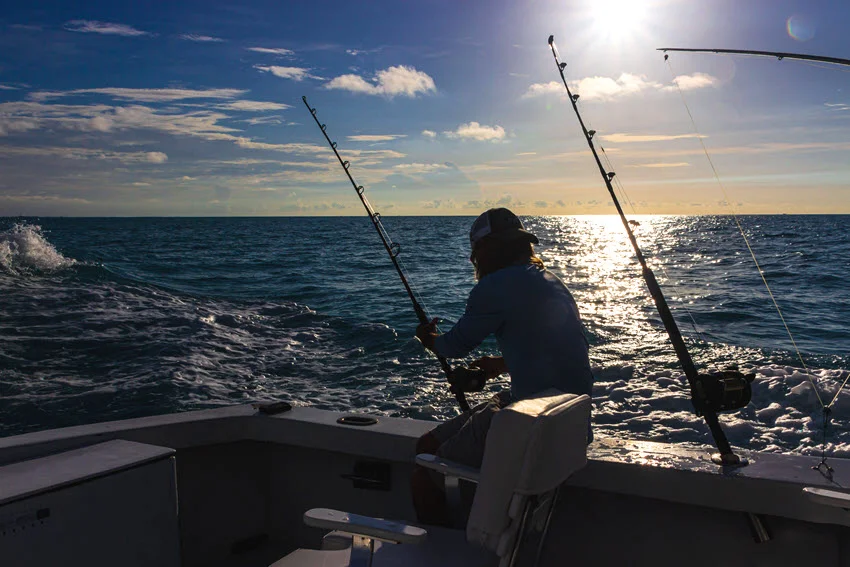
Bump trolling blends trolling and drifting by letting your baited hooks "bump" along the current at slow speeds. This technique mimics fleeing prey, keeping your presentation in constant motion. Adjusting the boat's throttle just enough to move your lines creates a tantalizing wobble. Wobble can trigger aggressive strikes from nearby swords.
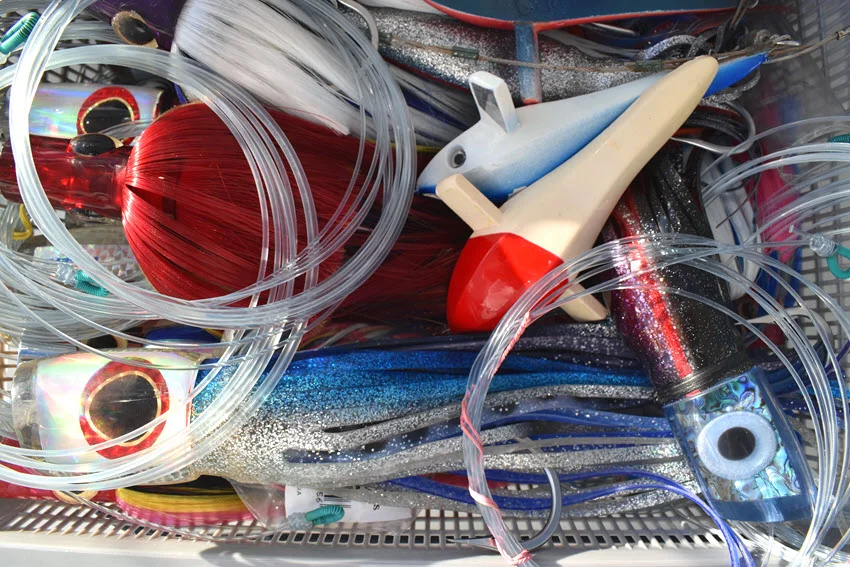
Choosing the right bait and lure is crucial to entice these deep‑water predators. Swordfish rely on scent, flash, and movement to locate prey. Below are the most effective live baits and artificial lures for Swordfish.
Live squid remains the go‑to bait for Swordfish. It is prized for its scent. Mantle sections or whole squid are rigged on heavy circle hooks and suspended between 100 and 800 feet below the boat. Often it is paired with luminous lights to draw attention at depth.
Ballyhoo serves as an excellent live offering. Their elongated bodies and oily flesh retain scent and hook reliably. Anglers rig these baitfish by waxing thread through the dorsal area to secure them to circle hooks.
Bonito strips or whole bonitos are prized for their firm texture and strong scent. These qualities make them ideal for day fishing with Swordfish. Captains often sew multiple sections of the belly onto a strong hook, creating a presentation that withstands deep currents and aggressive strikes.
Oiled mackerel fillets are another popular bait. They offer a high dispersion of scent in the cold water layers. Anglers usually use Atlantic or American mackerel.
Many anglers cover live baits with vinyl or silicone skirts in vibrant patterns. They do this to improve visual appeal. These skirts add flash and pulsating action while protecting the bellies of squid or fish from fin-nipping by smaller species. Skirted lures typically range from 9 to 11 inches in length. They come in glow or foil finishes to stand out in deep, dark waters.
Artificial glow jigs combine weighted heads with translucent bodies. These deep‑drop jigs are fished on electric reels to maintain contact at depths up to 1,500 feet, offering a low‑maintenance option when live bait isn't available.
Swordfish are often caught at night or in deep waters, where light is minimal. Specific lure colors, such as blue, purple, and black, are more visible underwater. Swordfish have large eyes adapted to low-light environments. Fluorescent and reflective colors glow in the dark. Purple is the top choice of lure color for Swordfish. Red is also recommended for nighttime fishing. Blue and white combinations are a great option to mimic baitfish.

Targeting Swordfish requires more than just determination. It demands the right gear. The best gear is one that matches the size of the fish you're after.
Choosing fishing gear also means striking a balance between strength and sensitivity. Below, we analyze the best settings for this predator. Don't miss it!
If you tend to catch smaller Swordfish, under 200 pounds, you don't need the most extreme setup, but sturdiness still matters. The baseline is a solid 80-lb test braided main line paired with a 200-lb monofilament.
Hook selection leans toward circle hooks or smaller 9/0 J-hooks that offer secure penetration without tearing through the fish's soft mouth. Weights of 2 to 3 pounds are usually enough for night fishing to keep baits deep. Lights, such as water-activated LEDs, are essential to draw attention. Green is best due to its superior visibility at depth.
Chasing Swordfish over 300 lbs requires more robust gear. This type of gear is specialized for withstanding heavy-duty pressure and depth. Your central line should be at least 100 lb test braid. It is recommended to be paired with a 300 lb leader to handle prolonged fights.
Anglers often switch to heavier 10/0–11/0 J hooks for a better grip. In daytime deep-dropping scenarios, a 7 to 9-pound stick weight is recommended to keep your bait near the bottom, despite currents. Light placement becomes even more strategic. Under a full moon, lights should sit 20 to 30 feet from the bait. Increase the distance to 60 feet on darker nights to enhance spread and visibility.
Bent-butt rods are preferred for deep-drop fishing. They fit well into rod holders and give better leverage. These rods are commonly paired with electric reels, which are vital for retrieving rigs from depths of 1,000 feet or more.

Understanding fishing regulations and preserving specific fish species contributes to protecting fish populations and ecosystems and promoting responsible angling practices.
Anglers Booking team
Swordfish fishing is closely monitored. Due to its popularity and commercial value, regulations are in place to protect the species. The goal of Swordfish fishing is sustainable fishing.
Being informed and respecting the rules is essential. In this way, you follow the law. You also help preserve Swordfish populations for future generations.
Swordfish fishing is a real challenge for anglers. With their enormous size and incredible strength, Swordfish represent the pinnacle of sport fishing. Remember one thing. Success doesn't happen by chance! It takes understanding Swordfish behavior, mastery of specialized gear, and respect for changing ocean conditions. The best anglers know when to go, where to fish, and how to adapt.
And what is your favorite place to fish for Swordfish? What bait do you use to catch this fish? We are happy to see your answers and experience in the comments below!

The expert copywriters at Anglers Booking have meticulously crafted this article. Our dedicated team of writers provides valuable insights and information to enhance your angling experience.
Embark on unforgettable fishing adventures with us at Anglers Booking.
book your charterOctober 17, 2025
October 15, 2025
October 10, 2025
October 11, 2025
October 4, 2025
September 29, 2025
September 25, 2025
September 21, 2025

You're now part of our exclusive community. Get ready for premium content and updates straight to your inbox.
close
Subscribe to our newsletter and receive a selection of cool articles every week.
Please enter a valid email address.

Be the first to know when we're back in action.
Please enter a valid email address.
Leave a Comment
Your email address will not be published. Required fields are marked *
Thank you for your comment! It has been submitted for review and will appear on the site shortly.